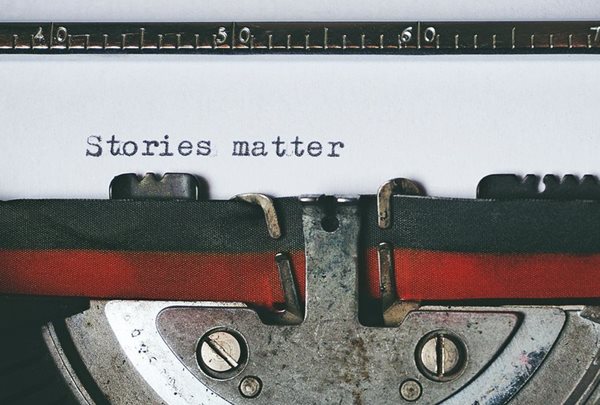To be successful in today's increasingly connected and brand conscious world, brands that want to succeed need to update their storytelling for the modern age, requiring a fresh point of view, while seamlessly weaving stories of the past into the present in new ways.

Photo by Suzy Hazelwood© from
PexelsIn the traditional sense, a heritage brand is a brand that has been around for many years, maybe even centuries. However, Covid-19 has somehow shifted these “good old days” to “before the virus days...” Hence, heritage branding has become a powerful tool.
Your brand doesn’t have to be a classic “heritage brand” to implement components of heritage branding. It’s not about having decades of history; it’s about telling your story and humanising your brand.
Whether your business was founded in 1854, 1998, or 2016, there is always a story to tell.
People have always loved to listen to stories because of the emotions and relativity it has in their own lives. Why, then, have brands not embraced this fundamental concept of brand storytelling? It could be the fear of the unknown or simply the lack of know-how.
Brands are always looking for ways to set themselves apart. While unique products, impeccable service records and other distinctive factors play a role, branding typically fosters a unique identity. Intricately connected to heritage is brand storytelling. It is how you tell your story that matters to a successful marketing strategy.
A brand that exhibits longevity, a track record, consistent core values and the use of symbols that stand for the brand over time, can use these elements as a means of taping into important impressions of their brand in order to procure loyalty and drive future sales.
Lee, the popular apparel company known for selling denim jeans, is an excellent illustration. Founded in 1889 by H.D. Lee, the company has been synonymous with the term “blue jeans.” To this day, the company taps into this history by telling stories and publishing content that honours the past, while encouraging customers to remain fashion forward.
Storytelling enhances your heritage branding
Trusted brands are often a priority for Consumers. In the past, they have looked at a company’s timeline to determine whether a brand was trustworthy. When they found a brand that had been around for generations, they typically considered it steady and reliable, while a newer brand was viewed in a more sceptical light.
This sentiment has definitely shifted in recent years. Today, you no longer need a legacy of years of brand equity. You simply need brand equity, full stop. Organisations establish brand equity by creating positive experiences, that entice consumers to continue purchasing from them over competitors who make similar products.
You may not have 200 years of history, you may only have five. You may not have generational customers, but maybe you have clients who have been with you since the beginning. If you have some history, you can leverage the principles of heritage branding to your advantage.
Through storytelling, you can make a real-time investment in content marketing, you can tell your brand’s story and relay your heritage to connect with customers on an emotional level to encourage loyalty.
1. Record your historyEvery brand needs a story, and every brand needs to tell that story. It is the magnet that draws your ideal customers to you, and it will give your audience members something to think about as they're making important buying decisions. Your heritage must be part of your brand story, to demonstrate how resilient your brand has been and to instil a sense of trust in the brand itself.
If you don’t know your story, you can’t relay it to customers. While you obviously can recollect where things began and how the business has evolved, take the time to actually put pen to paper and record the timeline, dates and important moments. In doing so, you will begin to see some common trends and identify a story that connects who you are now to who you were at the beginning, which delights the people who take interest in your brand.
2. Authenticity is key to any brand or story
You might not have a compelling history, but don’t try to compensate by fictionalising your past. Authenticity is the key to successful heritage branding. Making up stories - or even exaggerating - will only come back to haunt you.
An important question to ask is: What are your core values, the principals that attracted your loyal customers to your brand in the first place? Focus on those core values and research how people who hold those values are interacting with your brand, never losing sight of the fact that you have to modernise.
3. Focus on people
Whilst your company history is interesting, your customers really want to hear stories about people. Your focus should be less on corporate features and more on the people who have built your brand from the ground up. This is the true heart of a heritage brand.
Even with a heritage brand, don’t fall into the trap of being so ‘established’ that you cannot innovate, as the newer generations will not identify with you. You need to show them what you are really made of, on their terms. Adjust your visual brand identity if those elements are not being properly conveyed.
Put your brand promise, benefits, values, mission and vision into a language they understand and be sure to offer relevant support and advice for free.
4. Evoke nostalgiaDefinition: A wistful desire to return in thought or in fact to a former time in one's life, to one's home or homeland, or to one's family and friends; a sentimental yearning for the happiness of a former place or time.
If you have seen Ratatouille, the kiddies movie, nostalgia is perfectly captured in the scene where Anton Ego, a grumpy food critic eats the simple peasant dish, prepared by a little rat chef, taking him back to the days when his mother made it for him as a child. His reaction is priceless...
Nostalgia has a way of intoxicating people and making them align with certain brands. Having said that, you’ll have a far better chance of being successful in your heritage branding efforts if you can evoke some sort of nostalgia in your storytelling.
5. Never stop innovating
Why have companies like Wells Fargo and Lee hung around, while massive brands like Kodak and Blockbuster eventually withered away? In short, the former two brands have continued to innovate while still acknowledging their heritage. That’s the key!
Heritage and innovation don’t have to be in opposition with each another. In fact, traditional heritage brands - i.e., those that have been around for decades - are the best at innovating as they remain competitive in an ever-shifting world.
If you feel like your brand isn’t really cutting it, it’s possible that it’s not simply a marketing problem, it may be a whole brand issue. This does not mean your values have to change, you merely need to incorporate the things that will bring your brand up-to-date and relevant to the ‘new age’ audiences.
What’s your brand’s story?
Every brand has a story. To develop a heritage brand or one that will always be top of mind, it is imperative to take every opportunity to tell your story to avoid the latest brands from stealing your market share.
Your brand marketing strategy is your plan for moving your brand forward with targeted messaging that communicates your brand's values, promise and benefits to all the right people at optimal times. If you refuse to change, your hard work and dedication will be in vain and we all know that prevention is better than cure.
Adjust your message to make sure your brand remains significant. Partner with a digital brand storytelling agency that has the know-how and make the changes now before the noise starts again.

































